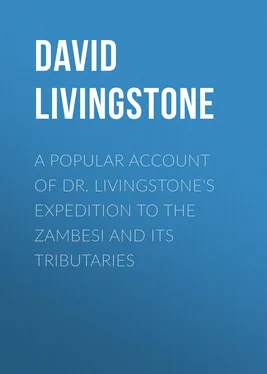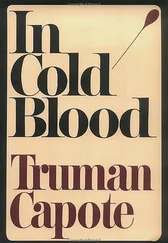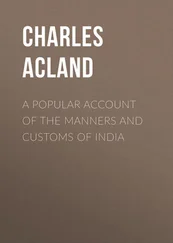David Livingstone - A Popular Account of Dr. Livingstone's Expedition to the Zambesi and Its Tributaries
Здесь есть возможность читать онлайн «David Livingstone - A Popular Account of Dr. Livingstone's Expedition to the Zambesi and Its Tributaries» — ознакомительный отрывок электронной книги совершенно бесплатно, а после прочтения отрывка купить полную версию. В некоторых случаях можно слушать аудио, скачать через торрент в формате fb2 и присутствует краткое содержание. Издательство: Иностранный паблик, Жанр: Путешествия и география, foreign_antique, foreign_prose, на английском языке. Описание произведения, (предисловие) а так же отзывы посетителей доступны на портале библиотеки ЛибКат.
- Название:A Popular Account of Dr. Livingstone's Expedition to the Zambesi and Its Tributaries
- Автор:
- Издательство:Иностранный паблик
- Жанр:
- Год:неизвестен
- ISBN:нет данных
- Рейтинг книги:4 / 5. Голосов: 1
-
Избранное:Добавить в избранное
- Отзывы:
-
Ваша оценка:
- 80
- 1
- 2
- 3
- 4
- 5
A Popular Account of Dr. Livingstone's Expedition to the Zambesi and Its Tributaries: краткое содержание, описание и аннотация
Предлагаем к чтению аннотацию, описание, краткое содержание или предисловие (зависит от того, что написал сам автор книги «A Popular Account of Dr. Livingstone's Expedition to the Zambesi and Its Tributaries»). Если вы не нашли необходимую информацию о книге — напишите в комментариях, мы постараемся отыскать её.
A Popular Account of Dr. Livingstone's Expedition to the Zambesi and Its Tributaries — читать онлайн ознакомительный отрывок
Ниже представлен текст книги, разбитый по страницам. Система сохранения места последней прочитанной страницы, позволяет с удобством читать онлайн бесплатно книгу «A Popular Account of Dr. Livingstone's Expedition to the Zambesi and Its Tributaries», без необходимости каждый раз заново искать на чём Вы остановились. Поставьте закладку, и сможете в любой момент перейти на страницу, на которой закончили чтение.
Интервал:
Закладка:
The superstitious ordeal, by drinking the poisonous muavé, obtains credit here; and when a person is suspected of crime, this ordeal is resorted to. If the stomach rejects the poison, the accused is pronounced innocent; but if it is retained, guilt is believed to be demonstrated. Their faith is so firm in its discriminating power, that the supposed criminal offers of his own accord to drink it, and even chiefs are not exempted. Chibisa, relying on its efficacy, drank it several times, in order to vindicate his character. When asserting that all his wars had been just, it was hinted that, as every chief had the same tale of innocence to tell, we ought to suspend our judgment. “If you doubt my word,” said he, “give me the muavé to drink.” A chief at the foot of Mount Zomba successfully went through the ordeal the day we reached his village; and his people manifested their joy at his deliverance by drinking beer, dancing, and drumming for two days and nights. It is possible that the native doctor, who mixes the ingredients of the poisoned bowl, may be able to save those whom he considers innocent; but it is difficult to get the natives to speak about the matter, and no one is willing to tell what the muavé poison consists of. We have been shown trees said to be used, but had always reason to doubt the accuracy of our informants. We once found a tree in a village, with many pieces of the bark chipped off, closely allied to the Tangena or Tanghina, the ordeal poison tree of Madagascar; but we could not ascertain any particulars about it. Death is inflicted on those found guilty of witchcraft, by the muavé.
The women wail for the dead two days. Seated on the ground they chant a few plaintive words, and end each verse with the prolonged sound of a—a, or o—o, or ea-ea-ea—a. Whatever beer is in the house of the deceased, is poured out on the ground with the meal, and all cooking and water pots are broken, as being of no further use. Both men and women wear signs of mourning for their dead relatives. These consist of narrow strips of the palm-leaf wound round the head, the arms, legs, neck, and breasts, and worn till they drop off from decay. They believe in the existence of a supreme being, called Mpambè, and also Morungo, and in a future state. “We live only a few days here,” said old Chinsunsé, “but we live again after death: we do not know where, or in what condition, or with what companions, for the dead never return to tell us. Sometimes the dead do come back, and appear to us in dreams; but they never speak nor tell us where they have gone, nor how they fare.”
CHAPTER IV
The Upper Shiré—Discovery of Lake Nyassa—Distressing exploration—Return to Zambesi—Unpleasant visitors—Start for Sekeletu’s Country in the interior.
Our path followed the Shiré above the cataracts, which is now a broad deep river, with but little current. It expands in one place into a lakelet, called Pamalombé, full of fine fish, and ten or twelve miles long by five or six in breadth. Its banks are low, and a dense wall of papyrus encircles it. On its western shore rises a range of hills running north. On reaching the village of the chief Muana-Moesi, and about a day’s march distant from Nyassa, we were told that no lake had ever been heard of there; that the River Shiré stretched on as we saw it now to a distance of “two months,” and then came out from between perpendicular rocks, which towered almost to the skies. Our men looked blank at this piece of news, and said, “Let us go back to the ship, it is of no use trying to find the lake.” “We shall go and see those wonderful rocks at any rate,” said the Doctor. “And when you see them,” replied Masakasa, “you will just want to see something else. But there is a lake,” rejoined Masakasa, “for all their denying it, for it is down in a book.” Masakasa, having unbounded faith in whatever was in a book, went and scolded the natives for telling him an untruth. “There is a lake,” said he, “for how could the white men know about it in a book if it did not exist?” They then admitted that there was a lake a few miles off. Subsequent inquiries make it probable that the story of the “perpendicular rocks” may have had reference to a fissure, known to both natives and Arabs, in the north-eastern portion of the lake. The walls rise so high that the path along the bottom is said to be underground. It is probably a crack similar to that which made the Victoria Falls, and formed the Shiré Valley.
The chief brought a small present of meal in the evening, and sat with us for a few minutes. On leaving us he said that he wished we might sleep well. Scarce had he gone, when a wild sad cry arose from the river, followed by the shrieking of women. A crocodile had carried off his principal wife, as she was bathing. The Makololo snatched up their arms, and rushed to the bank, but it was too late, she was gone. The wailing of the women continued all night, and next morning we met others coming to the village to join in the general mourning. Their grief was evidently heartfelt, as we saw the tears coursing down their cheeks. In reporting this misfortune to his neighbours, Muana-Moesi said, “that white men came to his village; washed themselves at the place where his wife drew water and bathed; rubbed themselves with a white medicine (soap); and his wife, having gone to bathe afterwards, was taken by a crocodile; he did not know whether in consequence of the medicine used or not.” This we could not find fault with. On our return we were viewed with awe, and all the men fled at our approach; the women remained; and this elicited the remark from our men, “The women have the advantage of men, in not needing to dread the spear.” The practice of bathing, which our first contact with Chinsunsé’s people led us to believe was unknown to the natives, we afterwards found to be common in other parts of the Manganja country.
We discovered Lake Nyassa a little before noon of the 16th September, 1859. Its southern end is in 14 degrees 25 minutes S. Lat., and 35 degrees 30 minutes E. Long. At this point the valley is about twelve miles wide. There are hills on both sides of the lake, but the haze from burning grass prevented us at the time from seeing far. A long time after our return from Nyassa, we received a letter from Captain R. B. Oldfield, R.N., then commanding H.M.S. “Lyra,” with the information that Dr. Roscher, an enterprising German who unfortunately lost his life in his zeal for exploration, had also reached the Lake, but on the 19th November following our discovery; and on his arrival had been informed by the natives that a party of white men were at the southern extremity. On comparing dates (16th September and 19th November) we were about two months before Dr. Roscher.
It is not known where Dr. Roscher first saw its waters; as the exact position of Nusseewa on the borders of the Lake, where he lived some time, is unknown. He was three days north-east of Nusseewa, and on the Arab road back to the usual crossing-place of the Rovuma, when he was murdered. The murderers were seized by one of the chiefs, sent to Zanzibar, and executed. He is said to have kept his discoveries to himself, with the intention of publishing in Europe the whole at once, in a splendid book of travels.
The chief of the village near the confluence of the Lake and River Shiré, an old man, called Mosauka, hearing that we were sitting under a tree, came and kindly invited us to his village. He took us to a magnificent banyan-tree, of which he seemed proud. The roots had been trained down to the ground into the form of a gigantic arm-chair, without the seat. Four of us slept in the space betwixt its arms. Mosauka brought us a present of a goat and basket of meal “to comfort our hearts.” He told us that a large slave party, led by Arabs, were encamped close by. They had been up to Cazembe’s country the past year, and were on their way back, with plenty of slaves, ivory, and malachite. In a few minutes half a dozen of the leaders came over to see us. They were armed with long muskets, and, to our mind, were a villanous-looking lot. They evidently thought the same of us, for they offered several young children for sale, but, when told that we were English, showed signs of fear, and decamped during the night. On our return to the Kongoné, we found that H.M.S. “Lynx” had caught some of these very slaves in a dhow; for a woman told us she first saw us at Mosauka’s, and that the Arabs had fled for fear of an uncanny sort of Basungu.
Читать дальшеИнтервал:
Закладка:
Похожие книги на «A Popular Account of Dr. Livingstone's Expedition to the Zambesi and Its Tributaries»
Представляем Вашему вниманию похожие книги на «A Popular Account of Dr. Livingstone's Expedition to the Zambesi and Its Tributaries» списком для выбора. Мы отобрали схожую по названию и смыслу литературу в надежде предоставить читателям больше вариантов отыскать новые, интересные, ещё непрочитанные произведения.
Обсуждение, отзывы о книге «A Popular Account of Dr. Livingstone's Expedition to the Zambesi and Its Tributaries» и просто собственные мнения читателей. Оставьте ваши комментарии, напишите, что Вы думаете о произведении, его смысле или главных героях. Укажите что конкретно понравилось, а что нет, и почему Вы так считаете.












![Edward Ellis - Adrift on the Pacific - A Boys [sic] Story of the Sea and its Perils](/books/753342/edward-ellis-adrift-on-the-pacific-a-boys-sic-s-thumb.webp)